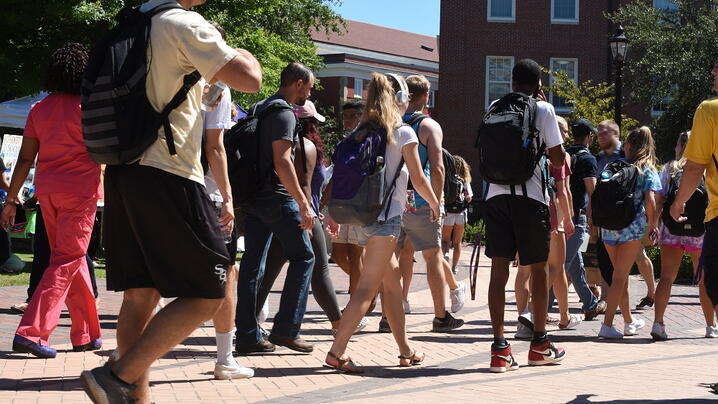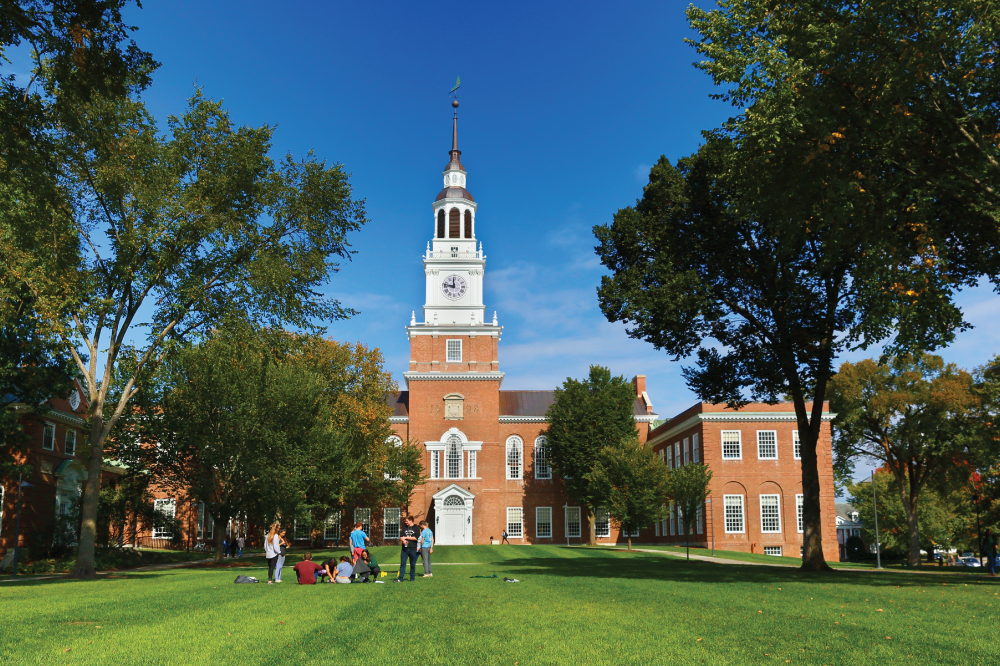
As varied as the majors available at colleges today, so are the approaches and strategies institutions of higher learning are taking as they prepare to reopen campuses in the coming weeks. The plans vary from bringing all students back, bringing some back, bringing students back in rotation, full remote learning with no students on campus at all, or a combination of on-campus instruction coupled with remote learning.
The issues are complex, and the decisions being made will not only reshape student life and learning but impact the economic vitality of the schools’ host communities and potentially the health and safety of town residents.
The presence of one or more academic institutions in a community has a direct impact on the demographics, economy, and overall character of that city, town, or county. According to the Boston Globe, the Commonwealth of Massachusetts alone draws “500,000 college students per year who contribute $25 billion to the state economy.” Last spring, the COVID-19 pandemic resulted in the closure of campuses and many college communities became virtual ghost towns overnight. Now, as communities reopen, local officials and residents are responding with varying degrees of optimism about a return to some semblance of normalcy. But there is also a notable sense of caution about how the return of hundreds or thousands of students will affect the fragile environments put in place to contain the spread of the virus.
Amherst, Massachusetts, is home to three institutions of higher education: Amherst College, a small private liberal arts college of 1,792 students; Hampshire College, another private college of about 600 students; and the University of Massachusetts, the state’s flagship public university with an enrollment of more than 28,635 students, 14,000 of whom usually live on campus. According to Amherst town manager Paul Bockelman, each college has a different plan for reopening. Over the past several weeks, he and his staff met with officials from all three schools to talk about their anticipated plans for addressing COVID-19 related concerns.
Hampshire College plans to bring back all of its students for an abbreviated fall semester beginning in late August. Students will be tested for COVID-19 upon returning and throughout the semester. The college is stressing social distancing and will use contact tracing if any student tests positive for the coronavirus. Hampshire has the capacity to provide single-room occupancy in dormitories to all returning students. Off-campus students may attend in-person classes but cannot enter residence halls. Two dorms are being set aside as quarantine housing if needed.
Amherst College is imposing strict guidelines for its 1,800 students, with restrictions mandating that students stay and eat on campus, with no guests allowed. According to Bockelman,
“They have essentially created a bubble and students will stay in that bubble. Students will be required to sign an agreement and can only leave campus for approved reasons. Class sizes will be modest and there will be take-away meals, minimal social contact, and students are subject to random testing.”
The University of Massachusetts expects about 7,000 to return to campus housing, about 60 percent of capacity, for an abbreviated semester that will end November 20, followed by online final exams. Most courses will be taught remotely.
Many students have already returned to the area, says Bockelman, raising some concerns for Amherst officials and some residents.
According to UMass officials, all students, whether they live on or off campus, are required to sign an agreement mandating that they follow guidelines such as wearing masks, reporting possible COVID-19 symptoms, engaging in social distancing, as well as testing for the coronavirus. The agreement also requires students to stay in the immediate campus area except for emergencies or internships. UMass officials are relying on a broad educational campaign to influence student behavior, but violations of the agreement could be addressed through disciplinary processes.

In Hanover, New Hampshire, home to Dartmouth College, town and college officials have developed a rigorous reopening plan, says town manager Julia Griffin. Dartmouth will bring half of its 4,400 students back September 14 for alternating semesters. Students will be quarantined for 14 days upon arrival on campus and most classes will continue to be taught online. Final exams will be remote, and most students will leave before Thanksgiving, returning in 2021. All students (including those studying remotely) must sign a pledge agreeing to abide by the new guidelines adopted for student health and safety. Griffin says there is a strong commitment from the college that violations of the pledge, such as failure to physically distance or comply with contract tracing, will result in disciplinary action, including suspension for a semester or up to an academic year. Fraternity and sorority life are a major part of Dartmouth’s social fabric and one of its biggest concerns as the college reopens, says Griffin. Last spring the town revoked all fraternity and sorority “right to assembly” permits. Each house has a sign posted prohibiting such assembly as well. Griffin says the potential loss of liability insurance is an added incentive for students to refrain from hosting social gatherings, along with the commitment by college officials to decertify any fraternity or sorority not complying with the issued restrictions.
Hanover officials recognize that Dartmouth faces challenges regulating the behavior of students living off campus. Bars still aren’t open in many places so social gatherings are increasing, risking the potential for community spread. Griffin notes the challenge of monitoring and enforcing public health guidelines with off-campus students. In response, Dartmouth has extended its protocols and requirements to its 400 off-campus students and town and college officials have developed an app, “LiveSafe,” that residents can use to report behaviors that threaten public health, such as large social gatherings or lack of social distancing.
Griffin says the reopening of Dartmouth College raises concerns for the town’s large elderly population and the potential risk of an increase in coronavirus cases if students do not follow health protocol. Griffin says the strong town-gown relationship is critical in addressing residents’ concerns, and that Hanover is benefitting from everyone being on the same page about the college’s reopening.
On the other side of New Hampshire, the Durham town council and town administrator Todd Selig are wrestling with similar issues as the University of New Hampshire prepares for fall opening. Like Hanover, Durham has a strong collaboration with UNH officials. Their goal is strong and consistent messaging for both on and off-campus students. Durham residents have expressed concern about the measures taken by UNH and the lack of mask wearing and social distancing by students living in off-campus housing. Students return to on-campus housing August 10 but some students in off-campus housing are already back and congregating. An estimate of as many as 40 percent were observed not using any “precautionary measures” and residents fear such actions risk public health. While the town issued an order for residents and visitors to wear face coverings in May, a more formal ordinance with fines and penalties is being taken up by the town council that will cite those for not wearing a mask and includes first, second, and third offense penalties and ultimately court appearances. Like the other schools, there is a detailed reopening strategy with clearly communicated consequences for those who don’t comply. “The university is taking a ‘have it your way’ approach," says Selig, allowing students to take in-person classes or remotely if they have underlying conditions or feel uncomfortable. Classroom seating has been reduced and previously unused buildings have been activated for teaching. Most general education courses will be online.
Perhaps the most critical component of opening up colleges and universities with thousands of students from all over the world, are the plans and protocols for testing, contract tracing, and/or daily or frequent screening. Keeping the community abreast of the results is also vital, as it is a major factor in mitigating residents’ concerns about students returning to the host communities. Not surprisingly, the approaches vary widely. According to a July 1 article in Inside Higher Ed, testing becomes a challenge with online teaching. When a student is on campus, university officials can impose many more restrictions. Off-campus, either down the street or in another state, the ability to regulate and impose testing is more difficult. Some schools are developing lab testing on-site, others are contracting with area hospitals. Some universities are employing pooled testing results. Many colleges studied will test their students upon arrival on campus and quarantine them in dormitories for 14 days. Buildings have also been identified to isolate students who contract the virus.
Even with all this forethought, the best laid plans can change in a moment. Dickinson College in Carlisle, Pennsylvania, planned to bring its 2,400 students back to campus August 17. Then, according to borough manager Susan Armstrong, college officials made the decision last week to continue all remote learning, only permitting international students and those with special circumstances to return to campus.
The common denominator in reopening is the need to have a strong town-gown working group that meets regularly to exchange information and data so officials can act quickly and be able to adjust at a moment’s notice if the situation warrants. Hanover town manager Julia Griffin acknowledges that schools must try and reopen.
“We desperately need them along with faculty and staff who also disappeared, says Griffin. “We want them to come back but they are coming back from all over the world, perhaps reintroducing virus factors into our environment where the virus has taken off. Our best planning for partial return may be for naught if it takes hold again and there may be no way we can do it. But we must plan for the eventuality that some students are back, so it’s both best case from economic and worst from public health risks. We need to take it one day at a time.”
Amherst’s Bockelman agrees.
“At the beginning of the pandemic I told my staff we must be forgiving of each other. We are going to make some decisions and a week will go by and they may not have been the right decisions, but we will go forward and do what we think is best.”
New, Reduced Membership Dues
A new, reduced dues rate is available for CAOs/ACAOs, along with additional discounts for those in smaller communities, has been implemented. Learn more and be sure to join or renew today!
